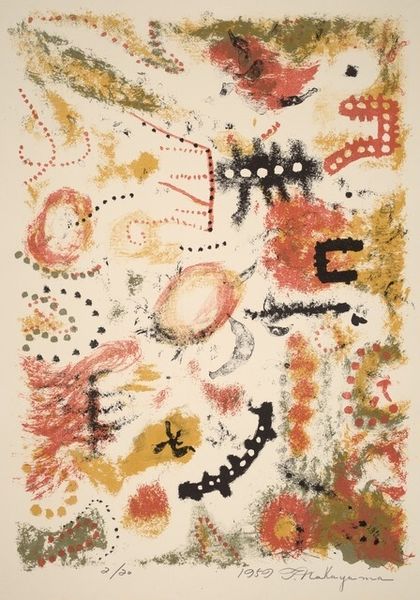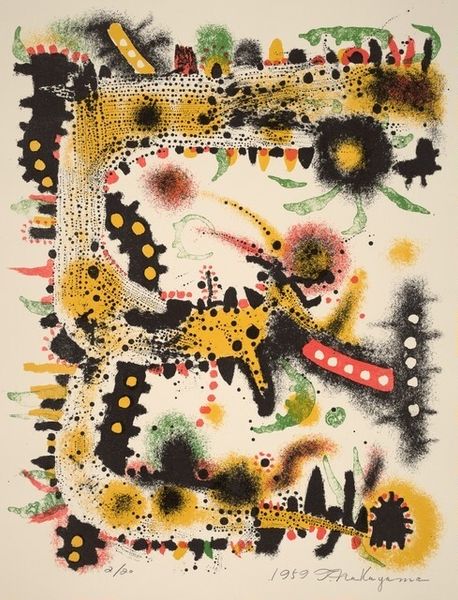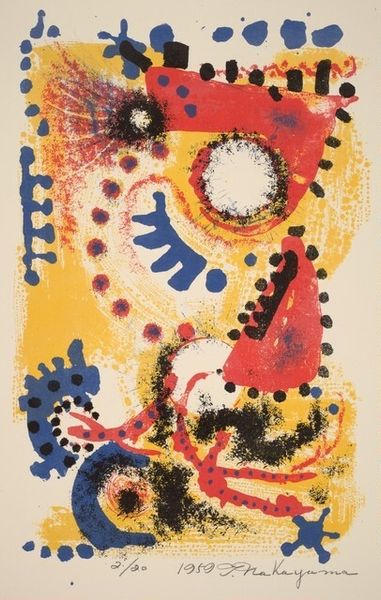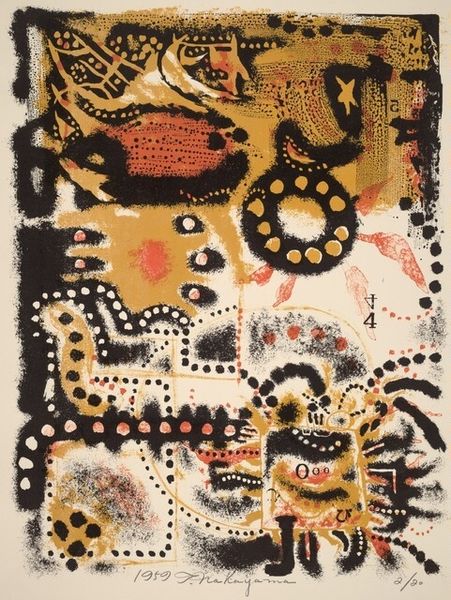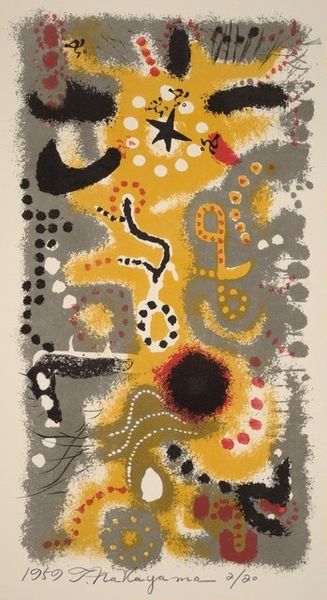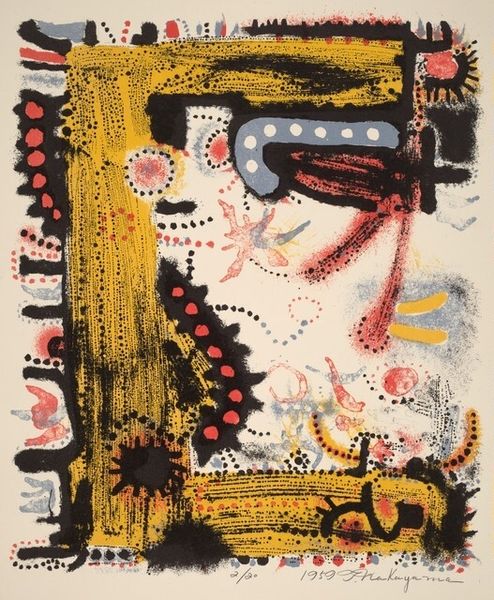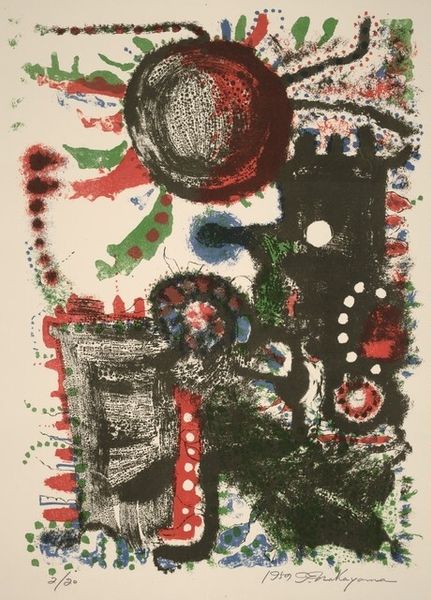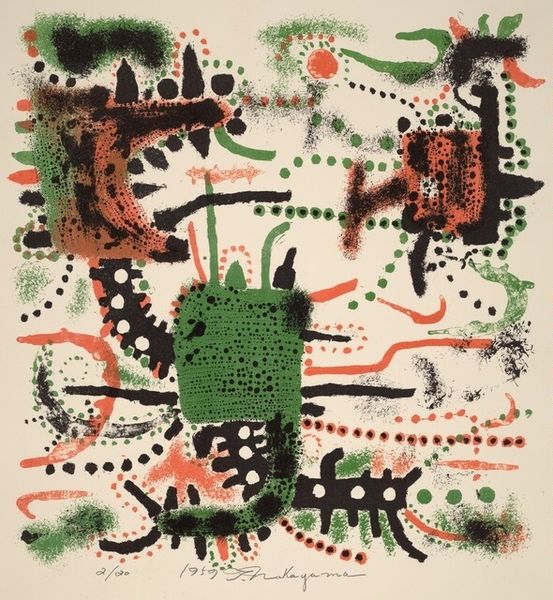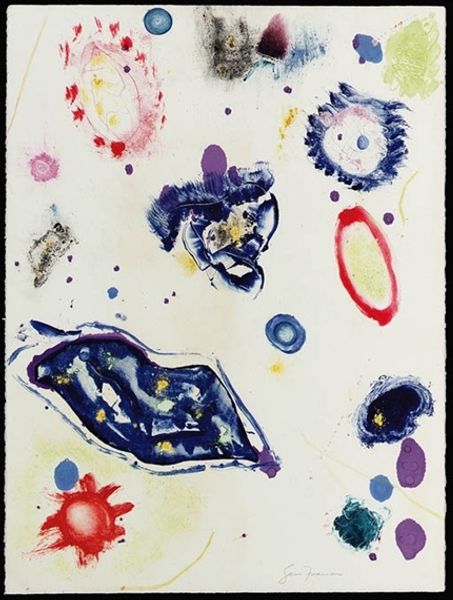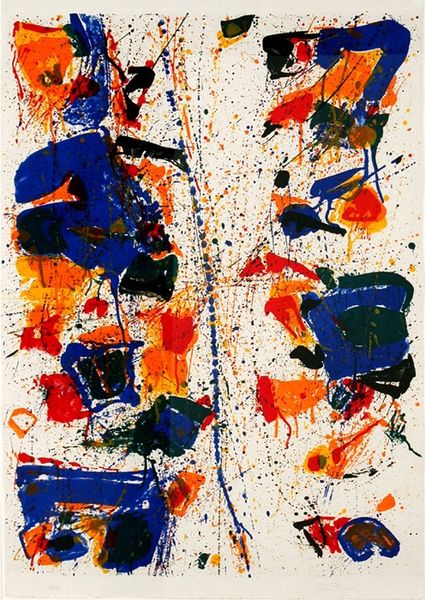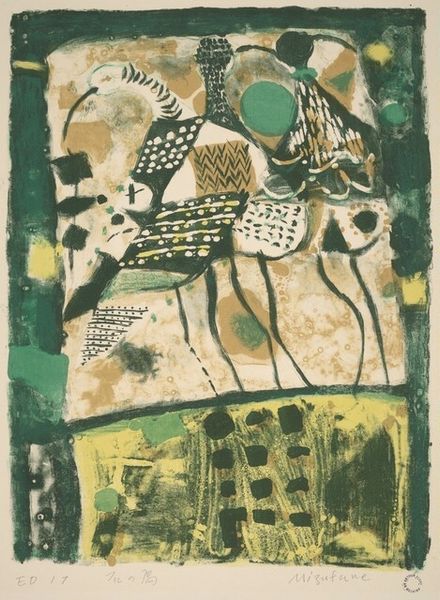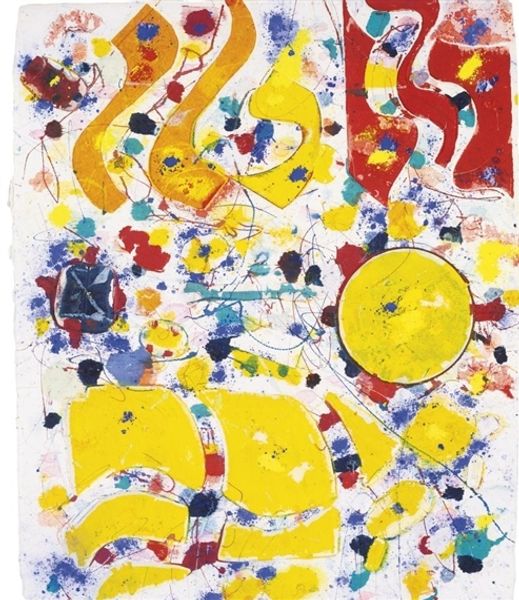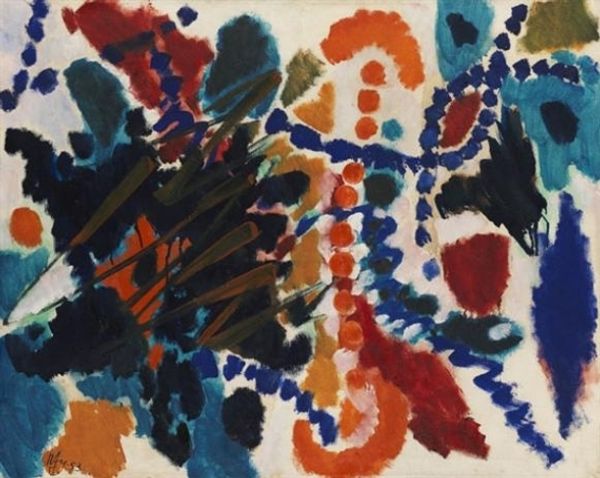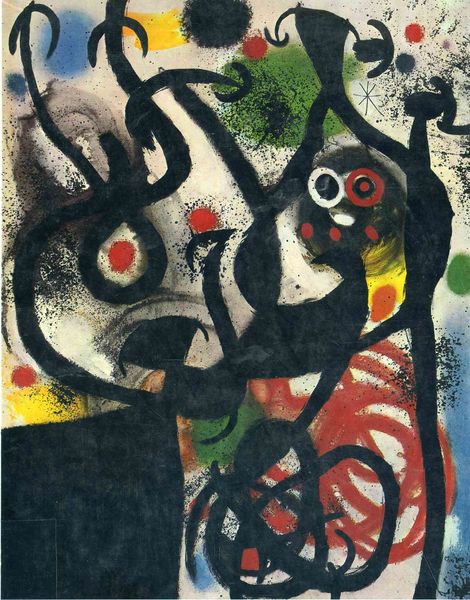
Copyright: National Gallery of Art: CC0 1.0
Curator: Looking at this dynamic print, titled "Rappa-Shu (Trumpeter) XIV" created by Tadashi Nakayama in 1959, one sees a captivating blend of organic forms. Editor: My immediate impression is that the work has an almost joyful energy about it. The dappled yellows and reds create a feeling of movement, even chaos, across the surface. Curator: Nakayama’s work emerges during a period when printmaking was gaining momentum, notably because printmaking was becoming a prominent medium for conveying artistic ideas, aligning with movements that prioritized broader social access to art. Editor: Focusing on the formal aspects, observe how the composition is carefully balanced. The placement of each individual shape and mark feels both deliberate and spontaneous, guiding the viewer’s eye throughout the piece. Curator: Well, beyond formal arrangements, let's contextualize Nakayama's fascination with nature. This is an interesting moment in postwar Japan; many artists started gravitating toward celebrating indigenous motifs in a way that also defied Western expectations about art and its function. Editor: I see how you can draw the line between social context and his choices. Speaking of natural motifs, look at the biomorphic shapes—suggesting animals, plants, or even microorganisms—scattered across the surface. Each carries its unique weight and texture, creating an engaging visual texture. Curator: His choice of subject also resonated with a growing fascination with blending traditions. These pieces allowed him to engage audiences on both aesthetic and philosophical levels. Editor: Looking closely, it becomes apparent that Nakayama uses color not just for visual appeal but to establish a certain kind of relationship with his audience. Curator: What stands out is that, regardless of artistic intent, "Rappa-Shu (Trumpeter) XIV" captures an era of artistic enthusiasm. Editor: Agreed. And perhaps that's its greatest contribution to the viewers; through the interplay of shapes and colours we have here a tangible depiction of what joy and chaos could feel like in the 50s.
Comments
No comments
Be the first to comment and join the conversation on the ultimate creative platform.
